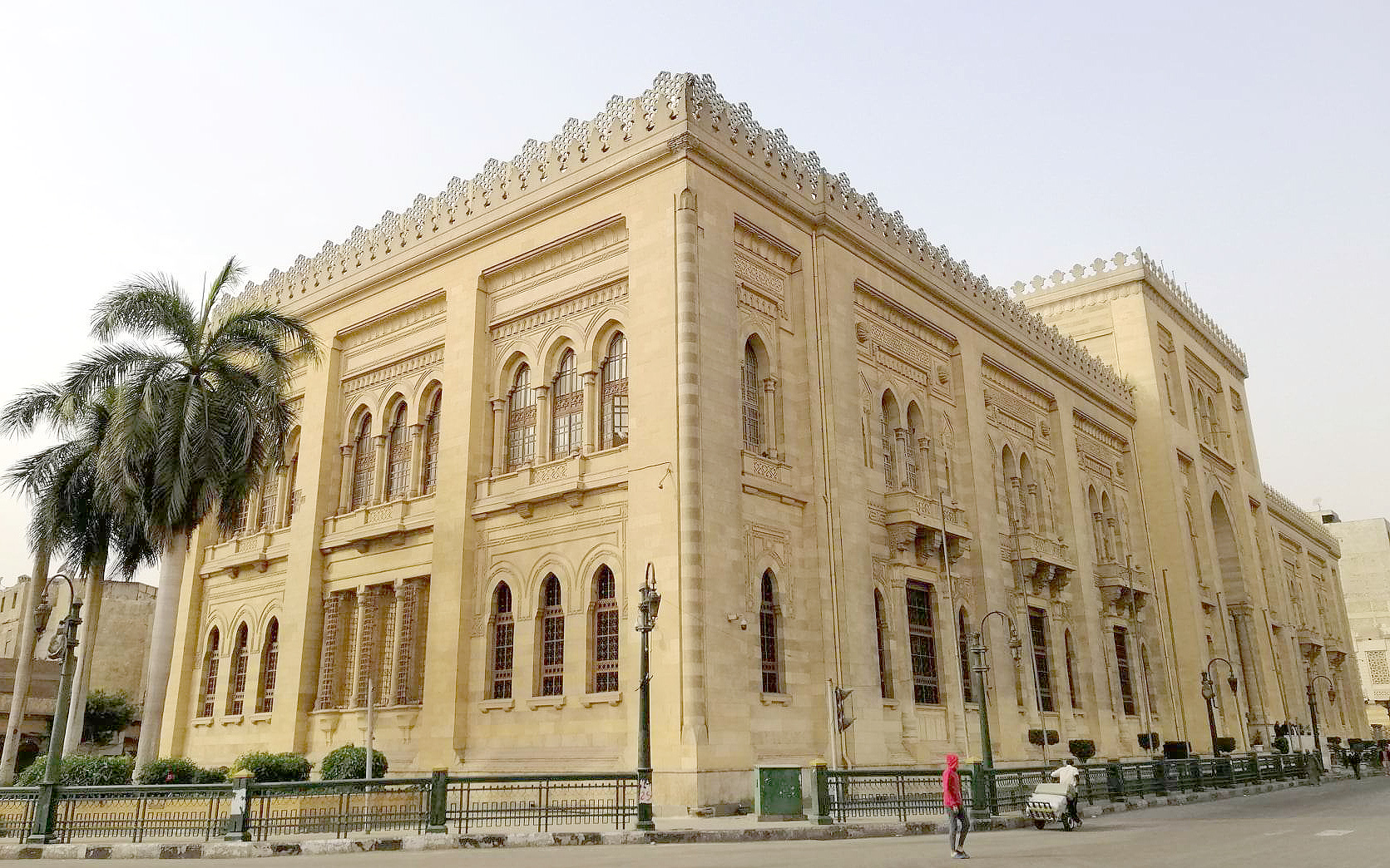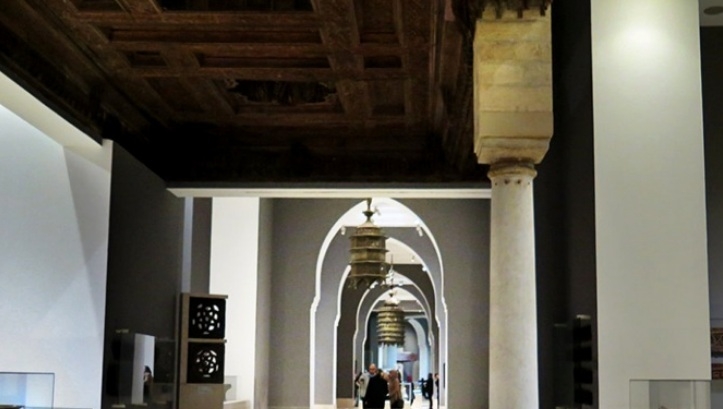Introduction: Cairo’s Hidden Cultural Gem
When people think of Cairo, their minds often leap to the Pyramids of Giza or the bustling Khan El Khalili bazaar. But tucked away in the heart of the city lies a quieter yet deeply enriching experience: the Museum of Islamic Arts. This museum is one of the most important Islamic art museums in the world and an absolute must-visit for travelers seeking to explore Egypt beyond the pharaohs.
Located in the historic district of Bab El Khalq, the Museum of Islamic Arts is home to an awe-inspiring collection that spans over a millennium of Islamic history, culture, and craftsmanship. Whether you're an art lover, history enthusiast, or culturally curious traveler, this museum promises an unforgettable journey into the beauty and intellect of the Islamic world.

What is the Museum of Islamic Arts?
The Museum of Islamic Arts (MIA) in Cairo houses one of the most comprehensive collections of Islamic artifacts globally. Established in 1903, it showcases over 100,000 items, though only a fraction are on display at any given time. These include manuscripts, ceramics, metalwork, textiles, wood carvings, and glassware, representing diverse Islamic dynasties from across the Middle East, North Africa, Andalusia, and Persia.
Unlike traditional museums that might focus solely on artifacts, MIA presents these objects in the context of their time, faith, and function — giving visitors not just a visual feast, but a deep cultural and historical education.
Why Visit the Museum of Islamic Arts in Cairo?
-
World-Class Collections: See rare artifacts that date from the 7th to the 19th century.
-
Architectural Beauty: The museum building itself is a masterpiece of Islamic architecture.
-
Cultural Insight: Gain a richer understanding of Egypt’s Islamic heritage and its place in global Islamic art.
-
Less Crowded: Compared to other Cairo attractions, MIA offers a peaceful and contemplative environment.
-
Central Location: It’s close to other attractions like Al-Azhar Mosque, Khan El Khalili, and Islamic Cairo.
Highlights of the Museum of Islamic Arts
Here are some standout features you’ll find during your visit:
-
Qur’anic Manuscripts: Some of the oldest and most beautifully scripted copies of the Qur’an, including ones written on parchment with gold and lapis lazuli.
-
Fatimid Ceramics: Delicately painted bowls and tiles from the Fatimid period, known for their intricate floral and geometric patterns.
-
Mamluk Metalwork: Exquisite bronze lamps, swords, and armor etched with verses and names of sultans.
-
Ottoman Textiles: Lavish robes, cushion covers, and prayer rugs featuring rich embroidery and vibrant colors.
-
Wooden Panels and Mashrabiya: Carved with Arabic calligraphy and floral motifs, offering a glimpse into Islamic architecture and home design.
Every piece tells a story, whether of a sultan's reign, a craftsman’s skill, or a scholar’s devotion to knowledge.
A Museum Designed to Inspire
The museum is divided into thematic and chronological sections. As you walk through, you travel through time — from early Islamic art under the Umayyads and Abbasids, through the height of the Mamluk dynasty, to the decorative richness of the Ottoman Empire.
Each gallery is well-lit and thoughtfully curated, making it easy to appreciate the craftsmanship up close. Informative panels in English and Arabic guide you through the displays, and many exhibits are interactive.
Visitor Experience: What to Expect
-
Opening Hours: Daily from 9:00 AM to 5:00 PM (closed on some national holidays).
-
Entry Fee: Very affordable, with discounted rates for students and Egyptian citizens.
-
Accessibility: The museum is wheelchair accessible and has air conditioning — a welcome break from Cairo’s heat.
-
Photography: Allowed without flash. Bring your camera for stunning shots of calligraphy and design.
-
Museum Shop: Offers books, replicas, and souvenirs related to Islamic art and Cairo’s history.
How to Get There
The Museum of Islamic Arts is centrally located in Bab El Khalq, not far from Tahrir Square. Here’s how to reach it:
-
By Metro: Nearest stop is Mohamed Naguib Station, followed by a short walk.
-
By Taxi or Ride-Sharing (Uber/Careem): Just enter “Museum of Islamic Art Cairo.”
-
With a Tour Guide: Many Cairo city tours by providers like Flying Carpet Tours include the museum as a stop.
Suggested Itinerary: A Cultural Day in Islamic Cairo
-
Morning: Start your day at the Museum of Islamic Arts to enjoy it before the heat and crowds.
-
Midday: Have lunch in nearby El Hussein Square or at a local café.
-
Afternoon: Visit the nearby Al-Azhar Mosque or take a stroll through Khan El Khalili market.
-
Evening: Enjoy a traditional Egyptian dinner or attend a Sufi music show in Old Cairo.
Nearby Attractions Worth Exploring
-
Al-Azhar Mosque: One of the oldest universities in the world, still active today.
-
Sultan Hassan Mosque: Known for its enormous scale and remarkable architecture.
-
Khan El Khalili Bazaar: A bustling market filled with crafts, spices, and antiques.
-
Citadel of Saladin: A massive fortress offering panoramic views of Cairo.
Tips for Making the Most of Your Visit
-
Bring a Notebook: You’ll want to jot down quotes or names of items that catch your eye.
-
Hire a Guide: A local expert can provide context and stories behind the exhibits.
-
Go Early: Mornings are cooler and quieter.
-
Dress Modestly: While there’s no formal dress code, modest attire is recommended.
Cultural Insights: More Than Just Art
The Museum of Islamic Arts isn’t just about pretty objects — it’s about understanding a worldview. Islamic art is deeply tied to spiritual, scientific, and literary traditions. You'll encounter astrolabes, early surgical instruments, poetry, and religious texts that showcase the Islamic Golden Age's achievements.
This museum demonstrates how Islamic civilization integrated art into everyday life — turning the ordinary into the beautiful.
Conclusion: A Must-Visit for Culture Lovers
The Museum of Islamic Arts in Cairo is one of Egypt’s most underrated treasures. It offers a journey through centuries of creativity, belief, and innovation — far beyond what most visitors expect from a museum.
If you want to understand the richness of Islamic history, or if you're simply looking for a peaceful and thought-provoking experience in the heart of the city, this museum delivers on every front.
So next time you’re in Cairo, step off the typical tourist path and dive into the artistic soul of the Islamic world. The Museum of Islamic Arts is ready to welcome you into a world of beauty, craftsmanship, and history.
Start exploring the timeless elegance of Islamic culture — one artifact at a time.
Discover Egypt tour packages that include a visit to Museum of Islamic arts – Start exploring today!

